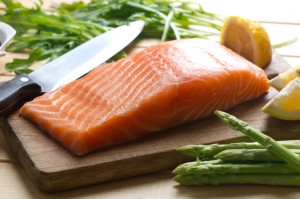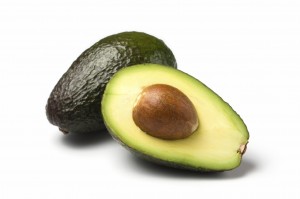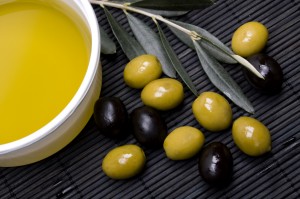Satiety: An apple a day can keep more than the doctor away | by

You have been on the go all day and arrive home ravenous. So you dive into a bag of chips, devouring the salty, crunchy goodness – chomping until you see the bottom of the bag. Feel full and satisfied?
Not likely, says Dr. Ethan Lazarus of the Clinical Nutrition Center in Denver. Even several hundreds of calories later, chips lack what it takes to satiate.
What is satiety (pronounced sa-TIE-atee)? Most simply, it’s the satisfaction you get from eating foods that taste good and fill you up, foods that are dense and contain some mix of protein, fiber, fat and water.
Science plays a big role in the satiety process. “More than 100 hormonal and neurological signals surround satiety,” says Dr. Rebecca Andrick of Weigh to Wellness Denver. As food passes along your gastrointestinal tract, your brain receives messages that your stomach is satiated. That takes about 20 minutes.
Choosing a broad range of healthy, satiating foods can help you lose weight or maintain your current healthy weight, she adds.
With the help of Lazarus, Andrick and Laura Piers, a registered dietician at Spalding Rehabilitation Hospital, we’ve compiled a list of highly nutritious, satiating foods.
1. Nuts
A healthier crunch than chips, nuts contain heart-healthy plant sterols and fats along with fiber, which can help reduce LDL (bad) cholesterol, Piers says. A good source of folate, calcium and magnesium, nuts are also high in calories. Snack on a small handful or try sprinkling nuts on salads, yogurt or oatmeal.
2. Apples
A perfect, portable snack, apples are high in fiber and water, while low in calories. Despite their sweet taste, apples have a low glycemic load (so they don’t spike blood sugar), Andrick says. For lasting fullness, pair apple slices with 2 percent low-fat cheese or a spoonful of peanut butter.
3. Salmon
Salmon provides a healthy dose of protein, B vitamins and omega-3 fatty acids, which help reduce risk of heart disease by reducing inflammation in the body. Don’t love fish? Try chopping the filet into bite-size chunks to mix in with greens. Or try it on top of whole-grain crackers.
4. Eggs
Cholesterol has given eggs a bad name. However, Lazarus notes that recent studies show “high cholesterol in food doesn’t necessarily translate to high cholesterol in the body.” Still, limit eggs to six a week, Piers suggests. Hard-boiled, an egg is a great high-protein snack or salad topper.
5. Avocado
The (mostly) healthy fats in avocado, as well as nuts and olive oil, trigger gut satiety peptides, or proteins, that deliver that “yum” sensation. Rich in fiber, potassium and Vitamin C, avocados also help your body absorb antioxidant carotenoids, such as lutein and lycopene, in vegetables. Add avocado slices to salads or sub for mayo on sandwiches. Try the special avocado recipes offered in this guide. Fun and yummy!
6. Beans
Beans are great sources of fiber, protein and healthy carbohydrates and they are rich in iron, folate and other minerals, Piers says. Beans add bulk to your favorite soups and salads. Hummus, with its base of garbanzo beans, is a great snacking choice.
7. Quinoa
Quinoa is high in protein, fiber and essential amino acids—the building blocks for cells and muscles. This nutrient-dense grain (which packs folate, magnesium, iron and other minerals) tastes great hot or cold, in place of pasta and tossed with vegetables.
8. Olive oil
Speaking of vegetables, they didn’t make this list because they lack the calories to satiate. That’s where olive oil comes in. Comprised mostly of heart-healthy fats, use a tablespoon of olive oil to sauté. Or whisk with lemon and vinegar for a zesty dressing that’s healthier than what comes in a bottle.
9. Greek yogurt
Most Greek yogurts provide less sugar and double the protein of other yogurts, Andrick says. “Add berries and nuts and that’s a great, satiating meal,” she says. The 2 percent variety provides a bit of fat to help your body absorb vitamins. Use Greek yogurt instead of sour cream in recipes.
10. Dark chocolate
A few squares of dark chocolate (65 percent cocoa content or higher) pack rich flavor and heart-healthy flavanols. People tend to nibble it slowly due to its lower sugar content, which allows the brain more time to register satiation, Lazarus says. “It’s like drinking a fine wine instead of Michelob,” he says. “Some people who end their meal with dark chocolate and a glass of red wine are in a satiety nirvana. And they’re done.”
Satiety is not only about what you eat, but how you eat, Lazarus says. “Many emotions – being depressed or stressed – will be construed as hunger or lack of hunger,” he says. When you eat:
-
Sit at a table
-
Switch off the TV or computer
-
Chew slowly
-
Think about the flavors as you eat
-
Fuel your body all day long to avoid overeating late in the day
Leave a Comment
Please be respectful while leaving comments. All comments are subject to removal by the moderator.




